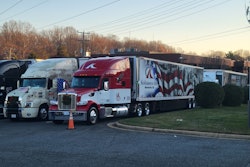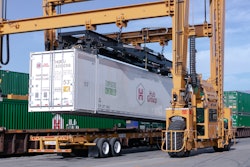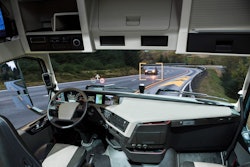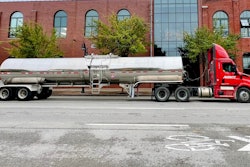Homeowners often make renovations or updates to a house when they plan to sell in order to attract buyers, or they make concessions – oftentimes lowering the price – during negotiations if sold as is. Arthur Axelrad, CEO and Co-Founder of software company Dispatch Science, said it’s the same when a trucking company decides to sell out.
A modern technology stack is much more attractive to potential buyers, said Axelrad, who is often called on during M&A planning to assess whether two tech environments can function together post-close.
M&A is on the rise in the transportation and logistics industry with deal value up $12 billion in late 2024 compared to six months prior, fueled by the desire for operational scale, according to the 2025 Tenney Group Annual Report. Tech integration is a big challenge amid those transactions.
Axelrad recommends that a seller update any legacy systems to increase their chances of acquisition. A potential buyer, he said, will want to factor in the cost and risk tied to modernizing a company that runs on legacy software.
“If a company is looking to sell, I think they are in a position to defend a higher valuation if they know that the future acquirer doesn't have that extra heavy lift. It also means that the due diligence will likely be faster since it'll be easier to get information out of it … and it will more than likely open themselves up to a higher number of potential suitors,” Axelrad said. “If you want to sell it for top dollar, then you have to do some of those minimum renovation kinds of projects.”
The heavy lift
The first question after the fundamentals of a deal (financials, customers, employees, etc.) is if the trucking company being sold is operating on an “old-school” legacy transportation management system, Axelrad said.
“That is going to make a big difference in how someone is going to approach an integration conversation,” he said.
Modern, cloud-based TMS platforms are not only the current trend but the direction most transportation companies are moving, said Beau McGinnis, senior associate at transportation M&A firm Tenney Group.
The easiest integration, McGinnis said, is when both buyer and seller share the same system.
In a perfect world, a company would have multiple divisions all on one system, Axelrad said. Realistically, they’re on disparate systems, but at least disparate systems that can talk to one another, meaning modern cloud and generally API enabled.
“Multiple disparate systems where some of those are legacy, that's where it becomes really laborious because a lot of those systems just don't have the interoperability,” he said. “It's big, painful lift.”
He said two different companies – both on legacy platforms – coming together would also be really tough.
That would result in operating via manual processes and typically training staff to use two interfaces with both exporting information into Excel to aggregate data.
“I think it's kind of on the low end of conceivable that they're going to roll one legacy system into another,” Axelrad said, adding that upgrading both companies from disparate legacy systems to a single cloud-based system would be a multi-phase journey.
But a combined company can still be successful on different technology stacks, he said, because many legacy systems still have integration capabilities through Electronic Data Interchange. It’s a question as to whether the company’s system can exchange data with other systems.
“It's not to say that if it's legacy software, it can't be done,” Axelrad said. “It's just typically not as not as transparent and not as easy, and sometimes you're forced to rely on people or resources that might not be as available.”
Derailing a deal
Though technology is a consideration for a buyer, it isn’t top priority.
McGinnis said Tenney Group hasn’t seen tech be a driving motivation in most M&A transactions within the trucking space, specifically on the asset heavy side. Though he said that has been the case in the brokerage and freight tech space because it is sometimes easier to buy than build.
But both McGinnis and Axelrad said they have seen cases where tech stacks have caused a buyer to back out.
“I would say technology can be a reason a deal doesn't get done, more than a reason a deal does get done,” McGinnis said. “Sometimes the headache that comes along with tech integration, changing a system … that could be enough to stop a deal in its tracks.”
He said it often stems from in-house customization and proprietary technology. Though that may seem a bit backward because innovation is applauded, McGinnis said many larger organizations that are generally the acquirers have devoted substantial funds and toward creating a tech infrastructure that allows them to be integrated across all business functions within the organization.
“When you go to add into the fold a smaller company that’s potentially overly reliant on some custom-built system, sometimes that doesn't integrate with the larger parent system that the buyer has,” he added.
But McGinnis noted that trucking companies that have developed technology that has truly definable business impacts but are more ancillary in nature could be seen as attractive. That could look like some kind of technology that helps the company manage damage claims or improve driver retention – something that is beneficial to the overall business but isn’t the day-to-day core operating system, he said.
Axelrad said if a company is getting a good deal, they’re less likely to be concerned about the tech stack, but if they’re close to paying a fair market valuation only to realize late in the game that a trucking company is operating on outdated technology, they might reconsider.
Another consideration
We’ve established that technology isn’t the primary driver of M&A, but it may become even lower on the totem pole, McGinnis said.
Technology over the past couple of decades has gotten drastically more inexpensive on every front. McGinnis used the example of how a flatscreen TV that wasn’t even flat would cost a ton, compared to now when consumers can purchase a truly flatscreen TV for around $200 on sale.
Because of that and the rapid expansion of AI, he said companies are more likely to buy and customize or build their own technology, throwing the need to purchase a company that’s already doing what they need out the window.
“At the end of the day, tech has the opportunity to be a great value add or a value detractor in mergers and acquisitions,” McGinnis said.













